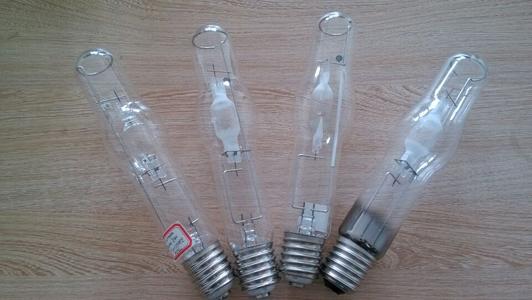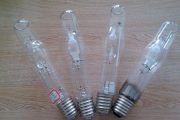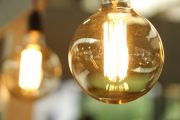What is Metal Halide Lamp
The metal halide lamp is a discharge lamp that produces arc discharge in the mixed vapor of mercury and rare metal halide. The metal halide lamp is a discharge lamp made by adding various metal halides to the high-pressure mercury lamp. Generation light source. The lighting adopts sodium scandium metal halide lamp. The metal halide lamp has the characteristics of high minous efficiency, good color rendering performance and long life. It is a new energy-saving light source close to daylight.
It is widely used in stadiums, exhibition centers, and large shopping malls. , Indoor lighting for industrial plants, street squares, stations, docks and other places.
Performance structure
There are two types of metal halide lamps (metal halide lamps for short), one is a quartz metal halide lamp whose arc tube bulb is made of quartz, and the other is a ceramic metal halide lamp whose arc tube bulb is made of half Made of transparent alumina ceramics.
The metal halide lamp is one of the best electric light sources in the world. It has high luminous efficiency (65~140lm/w), long life (5000~20000h), good color rendering (Ra65~95), compact structure, stable performance, etc. . It combines the advantages of fluorescent lamps, high-pressure mercury lamps, and high-pressure sodium lamps, and overcomes the defects of these lamps. The metal halide lamp brings together the main advantages of gas discharge light sources. Especially the three advantages of high luminous efficiency, long life, and good light color. Therefore, metal halide lamps have developed rapidly and have more and more uses.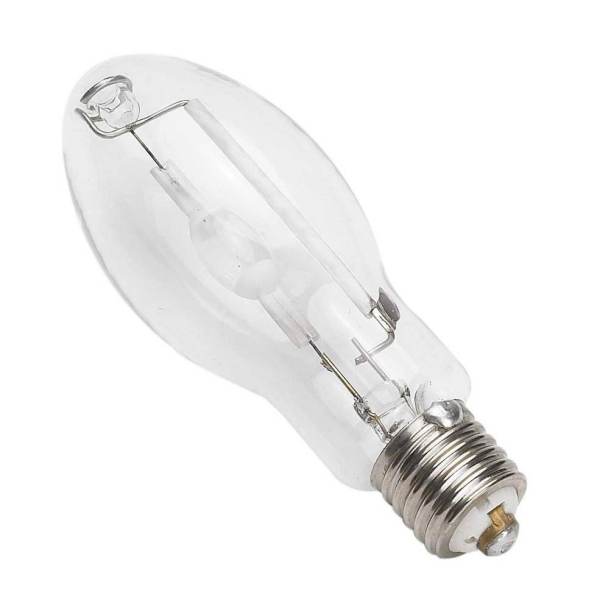
The metal halide lamps on the market are the same as other gas discharge lamps. The filling of the lamp contains mercury. Mercury is a toxic substance. Careless handling of mercury in the lamp will cause pollution to the production environment and damage the health of workers. , When the arc tube is exhausted, a small amount of mercury vapor is discharged. If it is not handled properly, it will be directly discharged into the atmosphere. When the lamp used is damaged, it will cause pollution to the environment.
A gas discharge lamp that emits light from a mixture of decomposition products of metal vapor (such as mercury) and halides (such as halides of elements such as dysprosium, sodium, thallium, and indium). It has the characteristic spectral line of adding metal, so the light color is improved and the light effect is also improved. The correlated color temperature of this kind of lamp is about 4000K, the color rendering index is 70, and the luminous efficiency is above 70lm/W.
The product parameters of the metal halide lamp adopt the unique olive-shaped design of the international leading arc tube, which can bring excellent light color consistency. Effectively solve the uneven color distribution caused by light color drift. The bracket installation structure without solder joints can prevent the solder joints of the bracket from breaking due to high temperature oxidation or oscillation, and further improve the reliability of the bulb. The arc tube is not limited by the ignition position and can achieve ignition at any position.
The luminous efficiency is extremely high, 20% higher than ordinary metal halide lighting. The average luminous efficiency is 110lm/w. When used on a reasonable lighting circuit, it has a better protective effect on the electrode of the lamp and can make the life of the lamp longer. The longest can reach more than 20,000 hours. High luminous efficiency and long life can reduce the number of light sources, electrical appliances and lamps used in the project, reduce the number of bulb replacements, and thus reduce overall maintenance costs. It is suitable for vertical and horizontal ignition, and the vertical ignition effect is better. It is most suitable for lighting in factories, large stores, shopping malls, buildings, advertisements, airports and other places that require high light and color consistency.
Classification
Research and development
The metal halide is filled into the arc tube, and the ionization of metal atoms is used to excite an electric light source that emits light. It has the characteristics of high luminous efficiency, high color temperature, and good color rendering. In 1911, Steinmetz discovered that when various metal iodides were added to a mercury discharge lamp, the spectrum of these metals would be generated in the discharge arc. However, the temperature of the discharge tube at that time was limited by the softening point of the glass, and its spectral intensity was weak.
In 1953, a microwave-excited quartz light emitting lamp with thorium iodide and no electrodes was made in the discharge, which produced bright white thorium emission lines. In the late 1950s, in order to improve the light color of the high-pressure mercury lamp, experiments were carried out to fill various metals and metal halides in the mercury arc tube. In 1961, the first metal halide lamp came out. The luminescent substance in the lamp was no longer mercury, but metal halide (iodide of sodium, thallium, and indium). Metal halide lamps have been further researched and developed.
Classified by filler
There are many classification methods for metal halide lamps, which can be divided into 4 categories according to the filling:
① sodium thallium indium. It has a linear spectrum with 3 peaks in the yellow, green, and blue regions.
②Sodium scandium. It has an approximately continuous spectrum in the entire visible light range.
③Dysprosium and holmium. In the entire visible spectrum, there are multiple spectral lines with very narrow intervals, which approximates a continuous spectrum.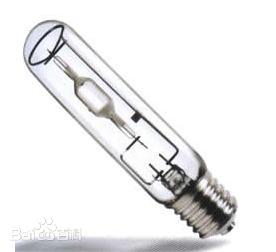
④ Tin halides. Has a continuous molecular spectrum.
There are also lamps filled with a single metal halide, which can emit a specific wavelength spectrum, such as a thallium lamp with a 535nm wavelength spectrum and green.
Classified by lamp structure
According to the structure of the lamp, it can be divided into 3 categories:
①The quartz arc tube is equipped with two main electrodes and a starting electrode, and a hard glass bulb (straight tube shape and ellipsoidal shape) is sleeved on the outside of the halogen lamp. This type of lamp is mainly used for general lighting in stadiums, roads, factories, etc.
②The straight tube-shaped arc tube is equipped with a pair of electrodes without an outer glass bulb, which can replace the straight tube-shaped tungsten halogen lamp for flood lighting in stadiums and other areas.
③Short arc spherical tungsten halogen lamp without outer glass bulb, single-ended or double-ended ellipsoidal tungsten halogen lamp. Mainly used for film projection and film and TV shooting lighting.
While Tungsten halogen lamp with hard glass outer bulb (quartz outer bulb can also be used), luminous efficiency is about 75~120lm/W, life span is from thousands to 20,000 hours; straight tube arc tube tungsten halogen lamp emits light The efficiency is about 90lm/W, and the life span is 1000-2000 hours; the luminous efficiency of the short arc spherical tungsten halogen lamp is 90-120lm/W, and the life span is hundreds of hours. The maximum power of metal halide is 10kW, and the smallest can be as low as 25W, which is used for home lighting.
What is the Difference Between a Metal Halide Lamp and an LED Lamp?
The difference between the metal halide lamp and the LED lamp is: the type of light source, the form of excess energy dissipation, the temperature of the lamp housing, the anti-vibration performance, the light distribution performance and the resistance to grid voltage interference.
- The difference of light source type:
Metal halide lamps are hot light sources; LED lamps are cold light sources.
LED energy is conserved. Except for the conversion into visible light, the excess energy will be dissipated in other ways, but the metal halide lamp can only convert about 30% of the electric energy into light, and the rest is converted into heat energy.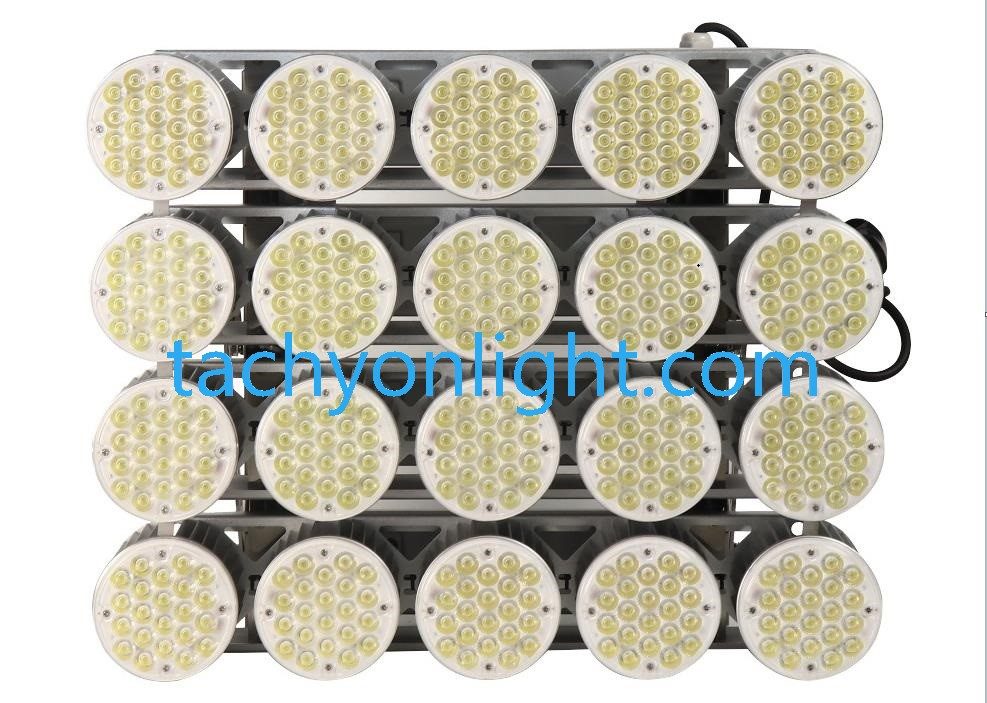
- The difference in the form of excess energy dissipation:
Metal halide lamps use infrared and ultraviolet rays to dissipate excess energy, but infrared and ultraviolet rays will affect product quality and affect human physiology;
The LED lamp generates heat through the light source device, which consumes excess energy, and the heat conduction is very easy to control.
- The difference in the temperature of the lamp housing:
The temperature of the metal halide lamp housing is very high, which can exceed 130 degrees,
The temperature of the lamp housing of the LED lamp is extremely low, normally below 75 degrees. The decrease in the temperature of the LED housing can greatly increase the safety and life of cables, wires, and supporting electrical appliances.
- The difference in vibration resistance:
The filaments and bulbs of metal halide lamps are easily damaged and have poor vibration resistance,
The light source of the LED lamp is an electronic component, which is inherently anti-vibration. LED lamps have unparalleled advantages in vibration resistance.
- The difference in light distribution performance:
The light distribution performance of the metal halide lamp is difficult, the waste is large, and the spot is uneven. It needs a large reflector and the lamp is large in size,
The LED light line is very easy to control, and can achieve a variety of light distributions under the same volume, and the light spot is uniform. The convenient feature of LED light distribution can greatly save the waste of lamps in the light distribution and improve the light efficiency of the lamp system.
- The difference in anti-power grid voltage interference:
Metal halide lamps: Poor, the lamp power changes with the fluctuation of the grid voltage, and it is easy to overload,
LED lights: stable, constant current power source drive can keep the light source power constant when the grid voltage fluctuates.
LED lamps can work normally during the fluctuation of the grid voltage from 90-265 volts, and have no effect on the life of the light source and lamps.

